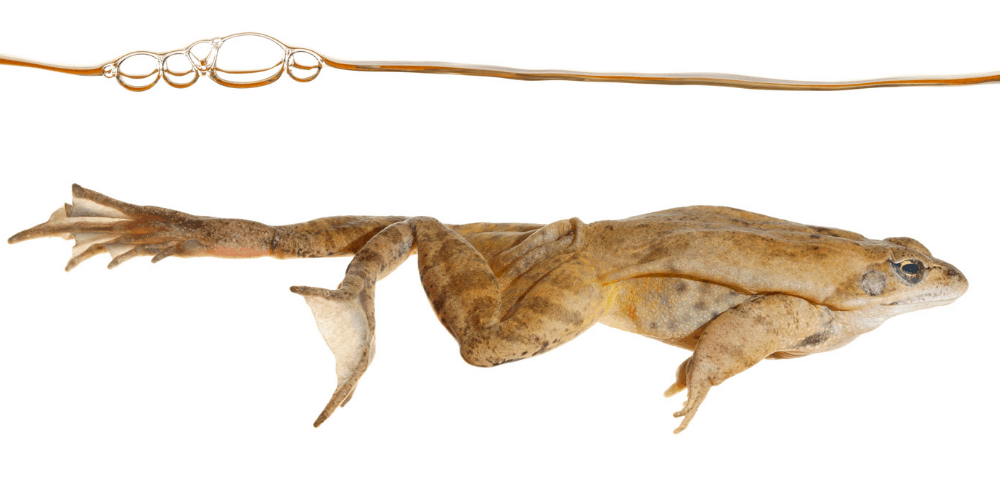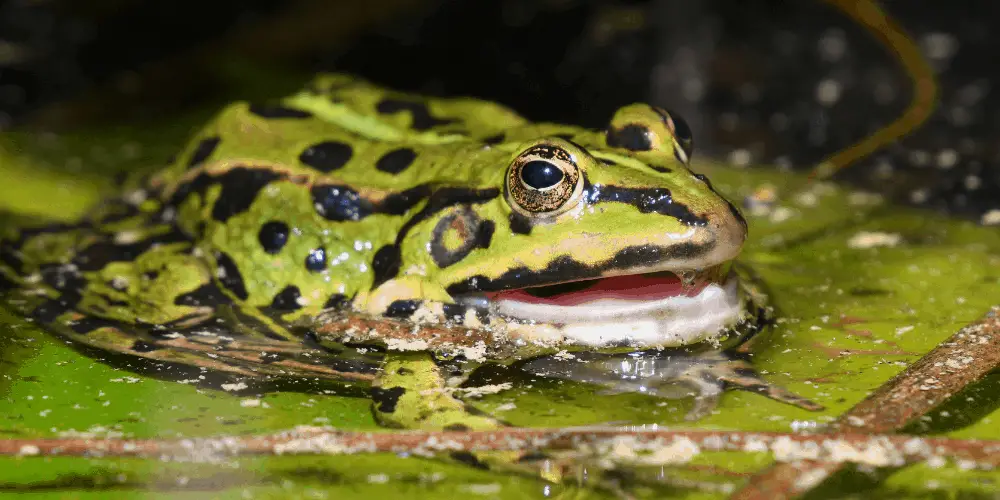A few particular frog species can hold their breath for multiple months while hibernating or even breathing water. Most frog species can only breathe air and must surface somewhat regularly to breathe. That begs the question, how long can such frogs hold their breath?
Most frog species can hold their breath underwater for 4 to 7 hours on average. This amount of time will vary from species to species. Some frogs can only hold their breath for a few minutes, while others can hold their breath for months or even breathe underwater.
This is pretty amazing. Imagine holding your breath for 4 to 7 hours.
Crazy, right?
Let’s take a closer look at how frogs can accomplish this stunning feat, along with which species may be able to hold their breath longer or shorter.
Keep reading to have all your questions on this topic answered!
How Do Frogs Breathe?
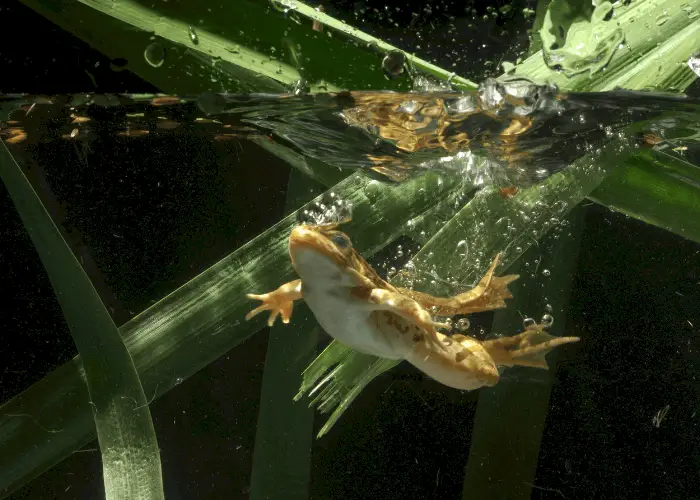
To fully understand how frogs can hold their breath for such sustained periods, let’s first examine how they breathe.
Because frogs are amphibians, they can breathe both air and water. Some specialized species of frogs spend their lives underwater and have lost the ability to breathe air.
These aquatic frogs rely on a set of gills to breathe water, much like tadpoles do before they grow lungs.
A group of frogs that breathe both air and water may be forced to hold their breath or come up to the surface if the water around them is low on oxygen. This can happen if the frog is swimming in stagnant water, like a pond or puddle with little to no water circulation.
So, when there is not enough oxygen present in the water around them, frogs will be required to hold their breath. That’s when having lungs comes in handy.
Frogs have specially adapted lungs to hold their breath for long periods. Like we stated earlier, they can often hold their breath for 4 to 7 hours at a time.
Frogs can stay underwater for a long time because they have developed a special kind of breathing called cutaneous breathing.
This unique way of breathing allows them to absorb dissolved oxygen through their skin, allowing them to stay underwater for a long time without having to come up for air.
However, this can sometimes be a bad thing. If there is too little oxygen in the water around them, the frog will start to suffocate unless it holds its breath.
This can be especially dangerous during long periods of hibernation when having sufficient oxygen levels is imperative.
Frog Respiration: Adapting to Aquatic Challenges
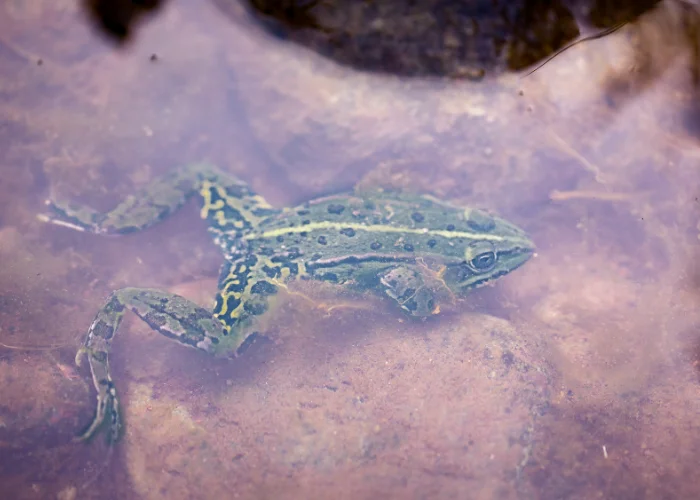
Frogs, those remarkable amphibians straddling the realms of land and water, have an intricate array of respiratory adaptations to navigate the challenges presented by their aquatic habitats.
Their ability to respire efficiently both in the air and underwater is a testament to their biological versatility.
Cutaneous Breathing: The Skin as a Respiratory Organ
Cutaneous breathing is central to a frog’s ability to adapt to aquatic environments.
Unlike mammals, frogs can exchange gases, such as oxygen and carbon dioxide, through their permeable skin.
This adaptation enables them to remain submerged for prolonged periods without constantly needing to surface for air.
The skin of aquatic frogs is remarkably vascularized, boasting an intricate network of blood vessels that facilitate the exchange of gases with the surrounding water.
The Aquatic Advantage
While most frog species exhibit a dual respiratory system, employing both lungs and skin for respiration, certain frogs have embraced aquatic habitats with specialized adaptations.
These adaptations include an increased reliance on cutaneous breathing and, in some cases, the development of gills.
Aquatic frog species have optimized their physiology for underwater survival, often submerging for hours or even days. Such specialization illustrates the frog kingdom’s remarkable diversity and ability to adapt to various ecological niches.
Behavioral Flexibility in Response to Oxygen Dynamics
Frogs exhibit remarkable behavioral responses to fluctuations in oxygen levels and other environmental cues.
When oxygen becomes scarce in the water, frogs may alter their behavior to seek out areas with higher oxygen content.
Additionally, frogs can adjust their activity levels, conserving energy and oxygen consumption. These adaptive behaviors contribute to their survival in environments where oxygen availability can vary widely.
Beyond Survival
In extreme scenarios, certain frog species have developed astonishing strategies to endure extended periods of underwater respiration.
Some frogs enter states of torpor, significantly slowing their metabolism during hibernation or when confronted with unfavorable conditions.
This unique adaptation allows them to conserve energy and minimize their oxygen requirements, enabling survival in otherwise fatal conditions.
CHECK OUT: Can Frogs Drown? [ Diving into Froggy Facts ] for a more in-depth frog survival topic discussion.
Which Species of Frog Can Hold Their Breath the Longest?
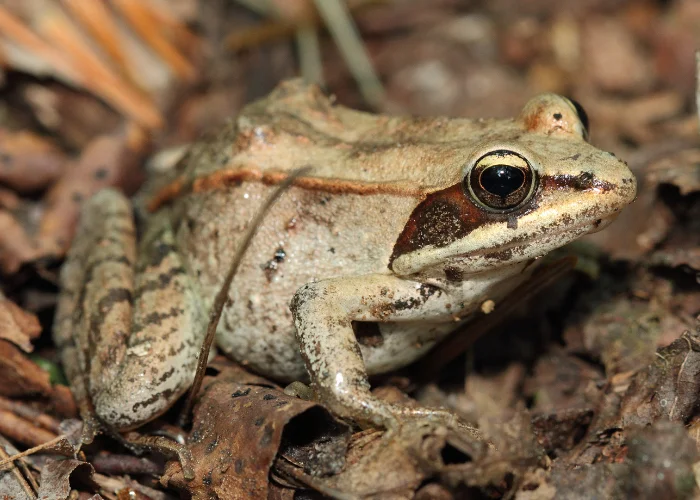
Many species of frogs are adapted to spend their entire lives underwater without ever needing to surface once.
Some of these frogs include the African Clawed Frog and the Western Clawed Frog, which spend all their time in the water without needing to venture upon long.
While frogs like these spend their whole lives in the water, they still need to surface occasionally to get air. They then will hold their breath for as long as they need to while hunting and mating underwater.
Some frog species will also hibernate through the winter or prolonged droughts, requiring them to stay under the water for long periods. When this happens, their respiration will slow down, allowing them to hold their breath for months at a time.
One such frog species is the Wood Frog, which holds its breath through the long winter months until spring.
Their respiration becomes so slow that they can hold their breath for this entire time while also surviving being frozen. Their blood produces a unique anti-freeze solution that will thaw them out in the springtime.
The Siberian wood frog, (Rana amurensis) was facilitated by a unique adaptation, the ability to survive extreme hypoxia — and probably anoxia — in waterbodies during overwintering.
In laboratory experiments the R. amurensis survived for up to 97 days in hermetically sealed containers with water that contained less than 0.2 mg/L oxygen at temperatures of 2–3 °C, retaining the ability to respond to external stimuli.
Final Thoughts
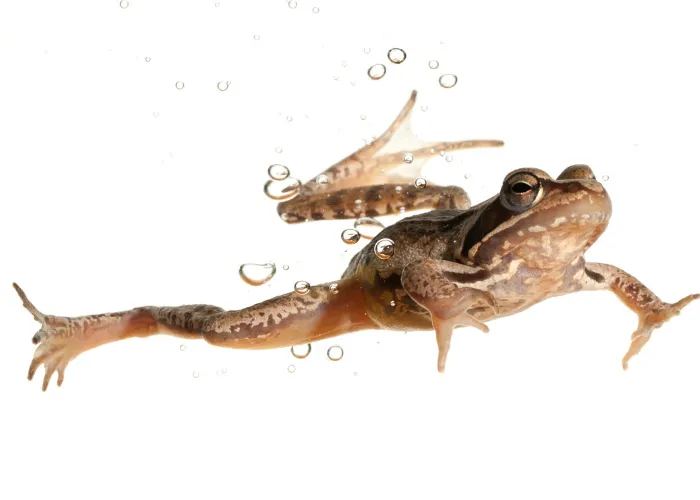
Frogs are amazing creatures, able to hold their breath for months at a time in some cases. However, most species of frogs can hold their breath for 4 to 7 hours, which is the norm across most frog species.
Some species of frogs have adapted to breathe only through their skin, allowing them to stay underwater their entire lives. Others have evolved to hibernate in freezing water for months without coming up for air once.
The tiny amphibian, the frog, accomplishes these amazing feats. Starting as just a little tadpole with no arms or legs, they grow into a creature adapted perfectly for water and land.
We hope the information we’ve outlined in this article has answered all your questions about how long frogs can hold their breath.
For all other questions about frogs, check out some of our other articles below:
MORE RELATED ARTICLES:

